DIY Alphabet Phonics Boxes, Tactile Letters, and Teaching Tips (Korean Hangul)
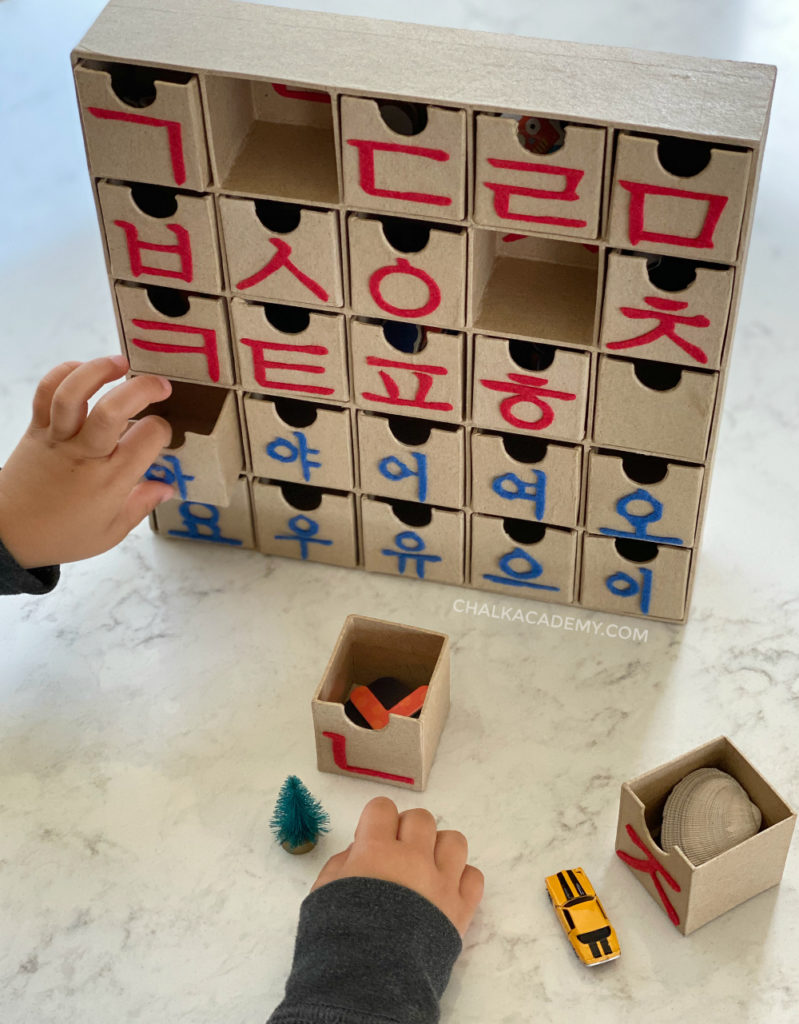
Have you heard of a Montessori phonics box for the Korean alphabet? When my daughter learned to read English, one of her favorite activities was matching letters and words to miniature objects. Not only were the tiny objects super cute, but they were also very effective in helping her remember the phonetic sounds.
Since we want to raise our children trilingual, we want to make Korean extra fun, especially since it’s our family’s third language. Therefore, I was motivated to try this with Korean and create Montessori Hangul alphabet phonics boxes for my younger child.
I will show you how we set up our alphabet phonics boxes and where we got our miniature objects. You can apply these concepts to teach English, Hanyu Pinyin, Zhuyin (bopomofo), and other phonetic alphabets!
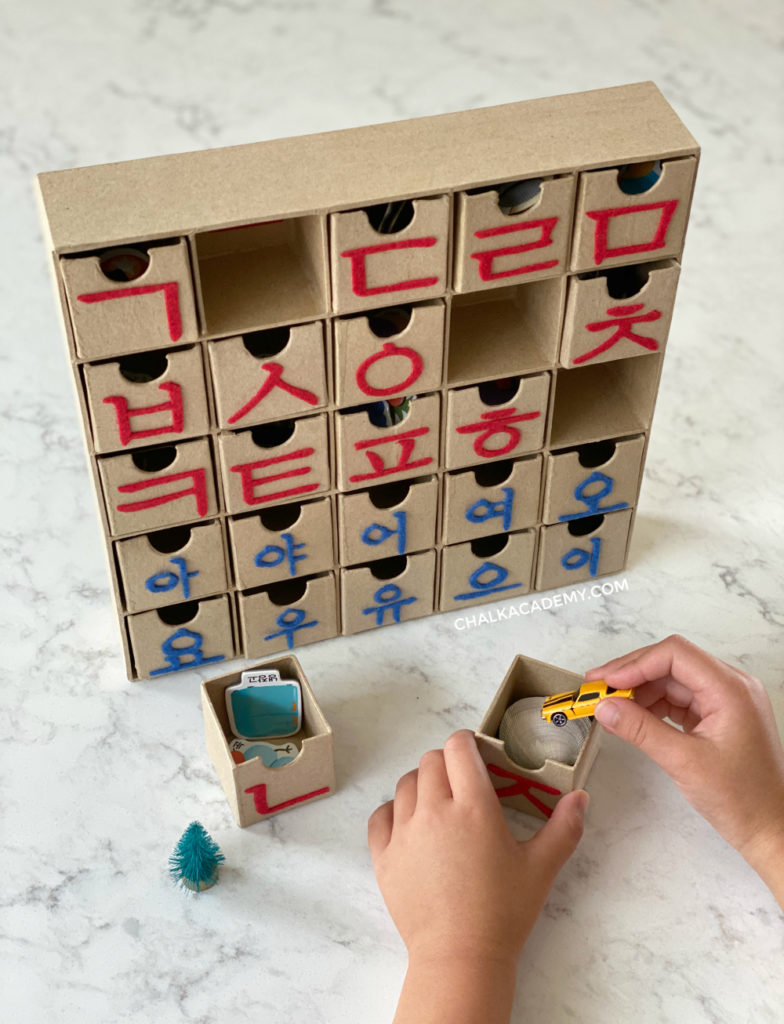
Chalk Academy is reader-supported. Some of the links are affiliate links. When you buy something through an affiliate link, we may earn a very small commission at no additional cost to you. More details here.
Teaching phonics with objects rather than letters
The best way to introduce the alphabet is by helping children notice phonetic patterns through listening and talking.
Teachers call this concept “phonemic awareness”. When a child has a strong phonemic foundation, letter recognition is more meaningful and can be more readily learned.
On the other hand, letters are abstract symbols. Eventually, children can learn to match the phonemic sounds with the associated alphabet letter.
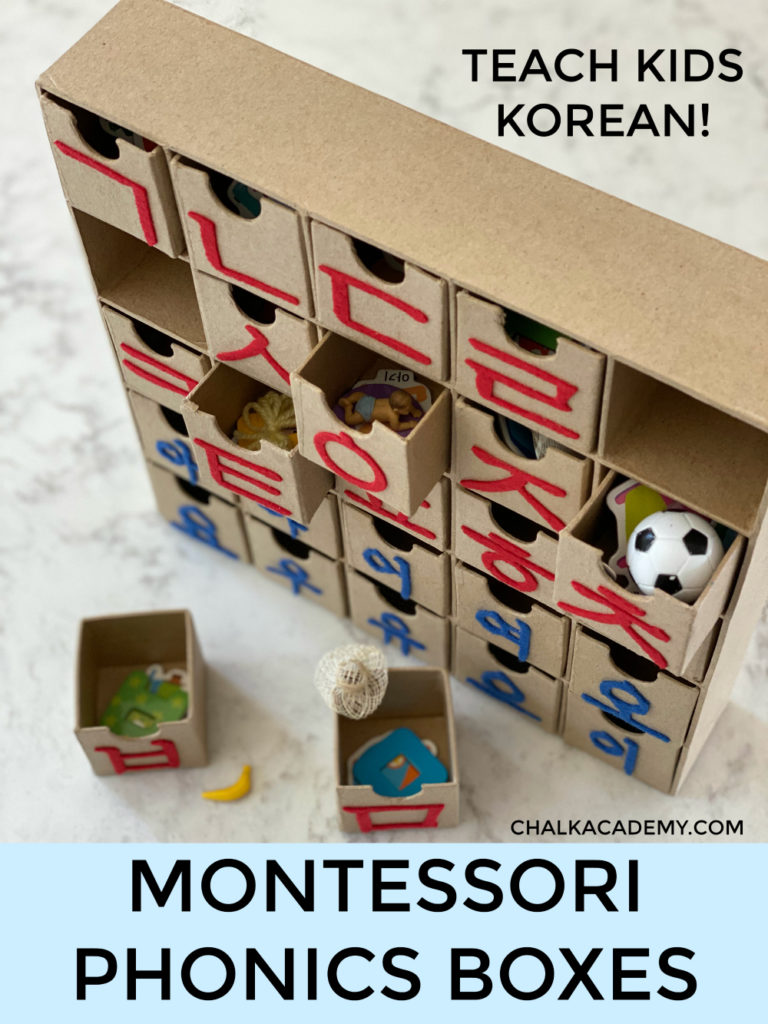
Teaching the Korean alphabet with hands-on activities
The Korean alphabet is arguably one of the easiest to learn. Many adults, including myself and our nanny, have learned it in less than two days.
So why put extra effort into teaching Hangul?
Korean is a minority language for my children, and they spend the least amount of time with this language.
Therefore, Korean is much weaker than their English and Chinese skills, but I want them to have positive memories associated with learning.
To compensate for the lack of quantity, we maximize quality by providing positive, multi-sensory experiences in their minority languages.

Although our children rarely see Korean in their natural environment, a print-rich environment serves as reminders to speak Korean.
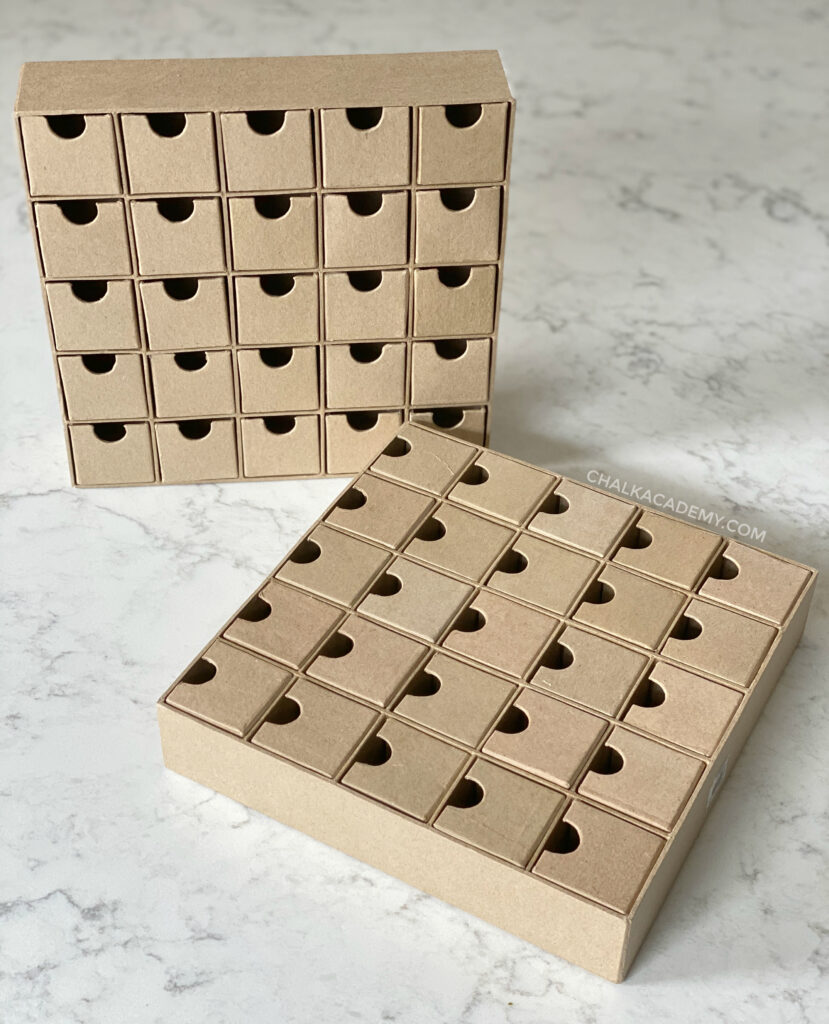
Montessori-inspired Korean alphabet phonics boxes: What you need
- Multi-drawer storage cabinet: My secret tip is to look for “advent” boxes!
- We have this 25-drawer paper mache box.
- Similar option: 25-drawer wood box.
- Miniature objects
- Before buying anything, look around your house and see what you can find or easily make. Hunting for mini objects is a fun sound game in and of itself!! Lego sets (that’s where our tiny 바나나 [banana] is from), and dollhouses are also great sources of mini objects.
- Montessori Services (we got a few from here)
- Michaels
- Korean Hangul magnet toys
- Printable pictures
- Alphabet letters:
- Option 1: Blue and red stiff felt + Cricut machine
- Option 2: Blue and red puffy paint
- Option 3:
- Glue
- Korean picture dictionary for reference (we also recommend this picture dictionary for learning more vocab and phrases)
Here’s a close-up view of an empty phonics box!
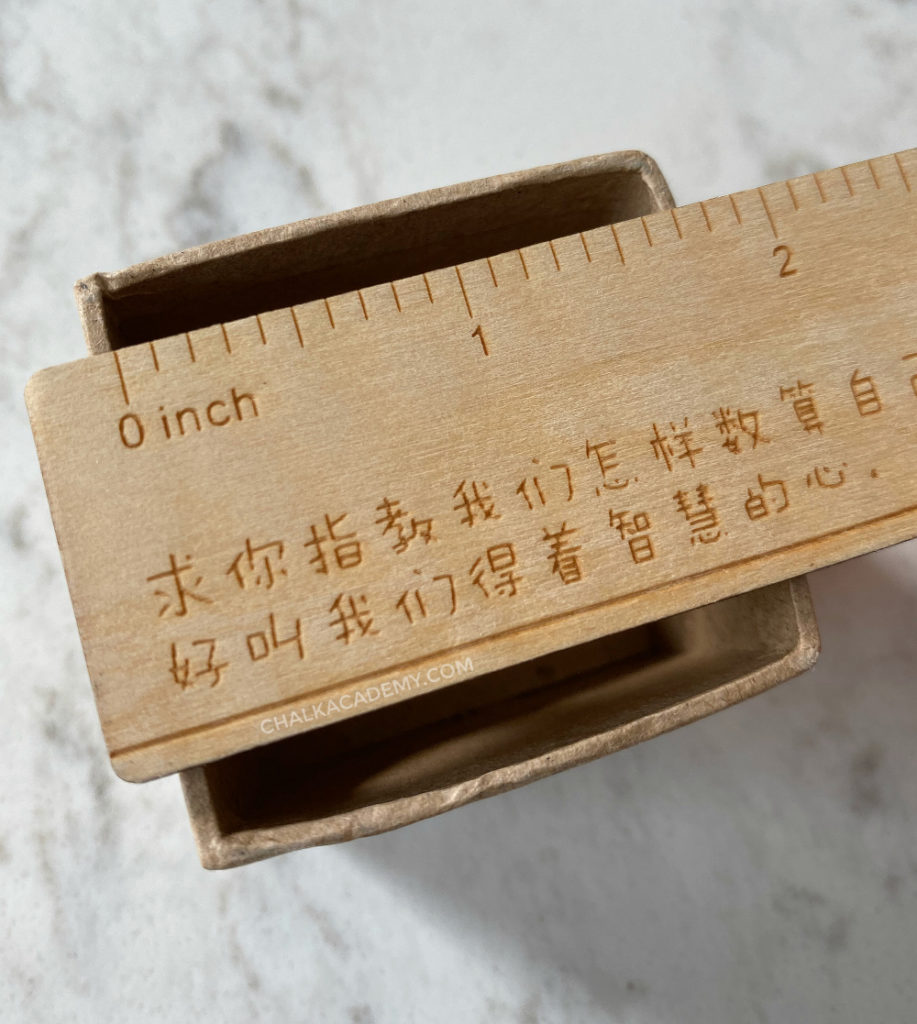
Montessori Tactile Korean Hangul alphabet letters: How to make them
- With a Cricut machine, cut the alphabet from felt so that each Hangul letter has texture.
- Affix each Korean letter to the box with a glue stick
- To create a control, create a second set of Korean alphabet letters.
- Glue the second set of alphabet letters to the back of each space so your child can match the Korean letter independently. This will help the child know where to put back each box.
If you don’t have a Cricut, you can create tactile alphabet letters easily with puffy paint.
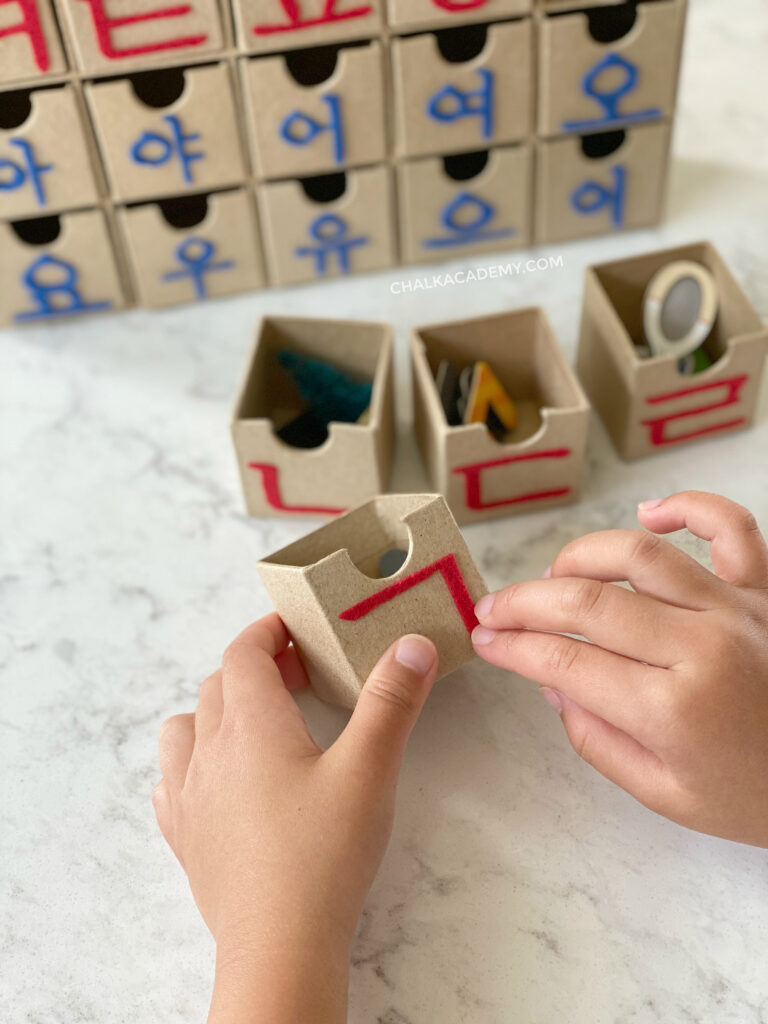
Significant of red and blue Montessori Korean alphabet colors
We used red for consonants and blue for vowels to remain consistent with our Montessori English alphabet resources.
The Montessori alphabet color system is brilliant! Not only does it help children understand the different letter types, but the color also serves as a control.
Like the English alphabet, all Korean words have a consonant and vowel.
Later, when children learn to spell, they can self-check that each word has both components.
When my daughter was younger, she struggled with identifying the vowel sound in a word, but the blue color served as a reminder.
Determine which objects to get with help from a Korean picture dictionary
Miniature objects are irresistibly adorable, and hands-on play gives sensory input when children hear the letter sounds.
To find appropriate mini objects to go with each box, we used our bilingual Korean-English picture dictionary as a reference.
This Korean picture dictionary has real photographs, making it ideal for learning new Korean words and useful for playing i-Spy.
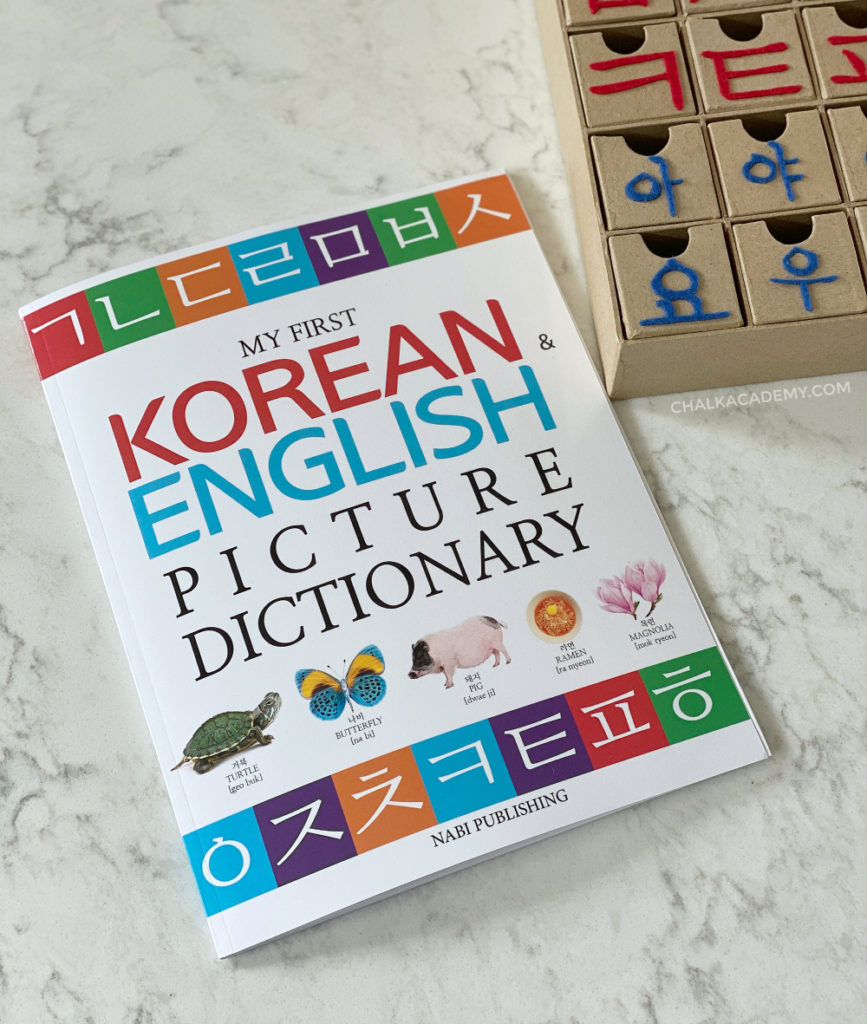
As you can see, the large font is also easy to read!
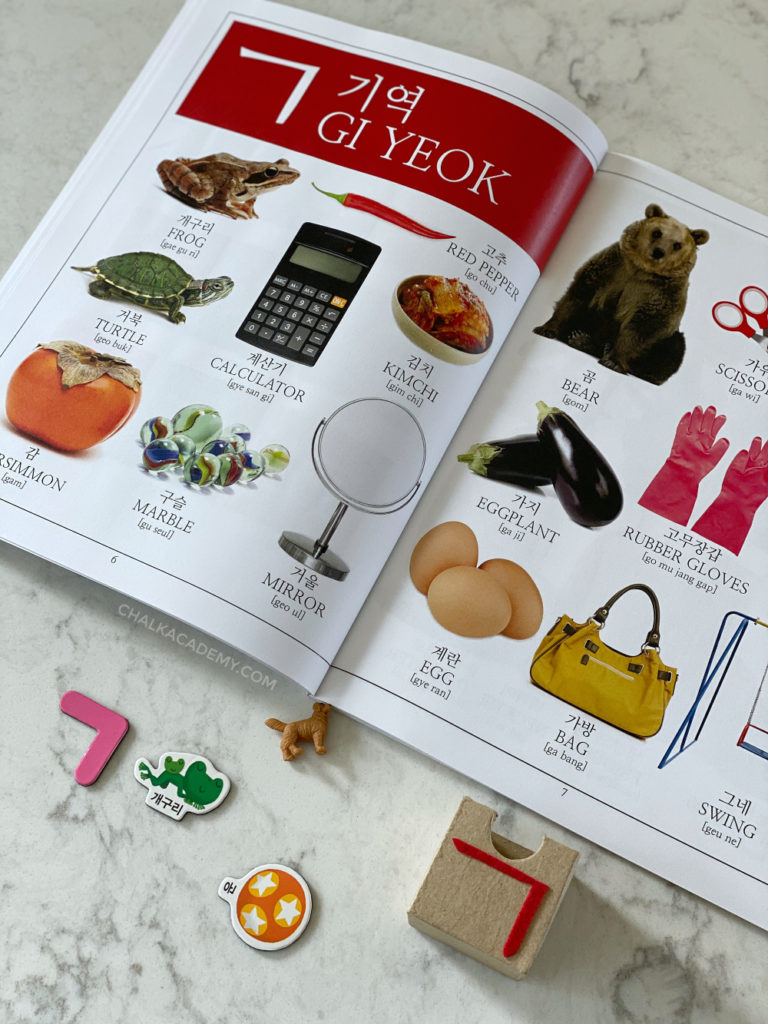
Tips for teaching Korean hangul alphabet with Montessori phonics boxes
- Introduce each sound through a Montessori 3-period lesson; focus on the sound rather than the letter name.
- Teach 1, 2, or 3 sounds at a time, depending on your child’s comfort level. You may want to take out a few objects at a time and separate them into a tray so that your child isn’t overwhelmed or distracted by the objects in other boxes.
Here’s a look at what we included in our Montessori-inspired phonics boxes!
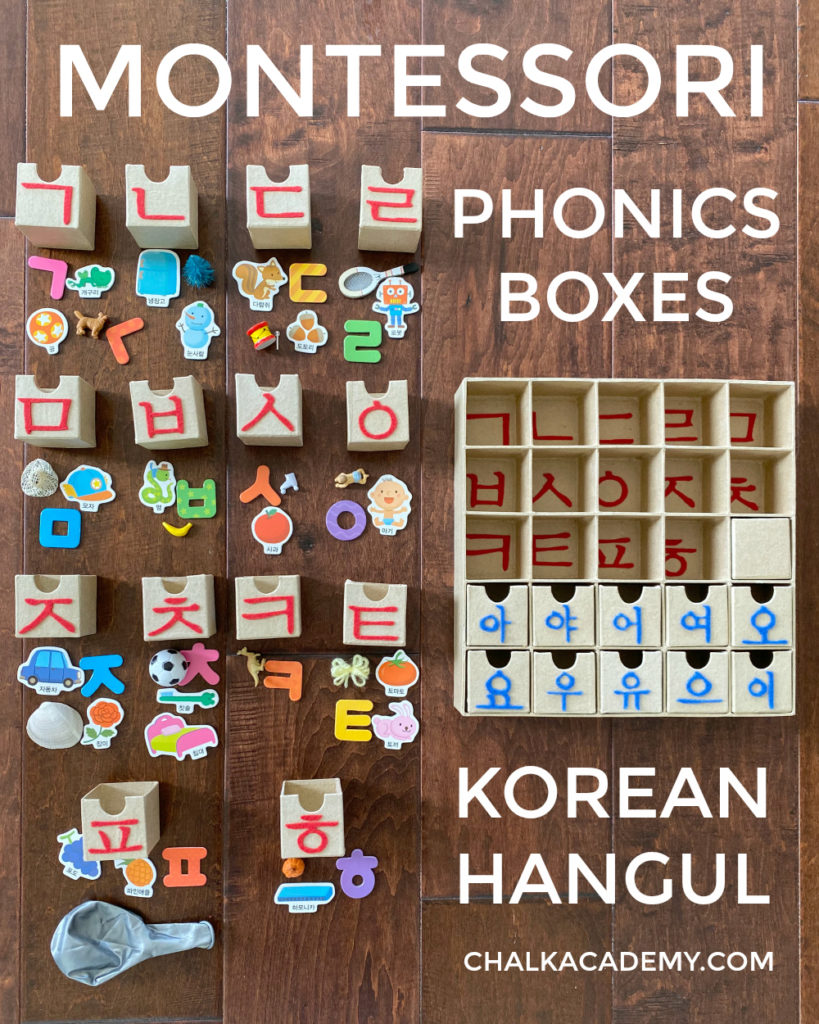
As a control, we glued Korean letters on the back of each box.
This way, my children can match the letter to its space and learn the correct order independently.
Have you tried teaching the alphabet with phonics boxes?
If you try this activity, please let us know in the comments below! What age(s) are your kid(s), and how did it go? We’d love to hear about your learning experience!
Korean resources for kids on Amazon!
Click here to see Korean books, music, and Hangul toys on Amazon!
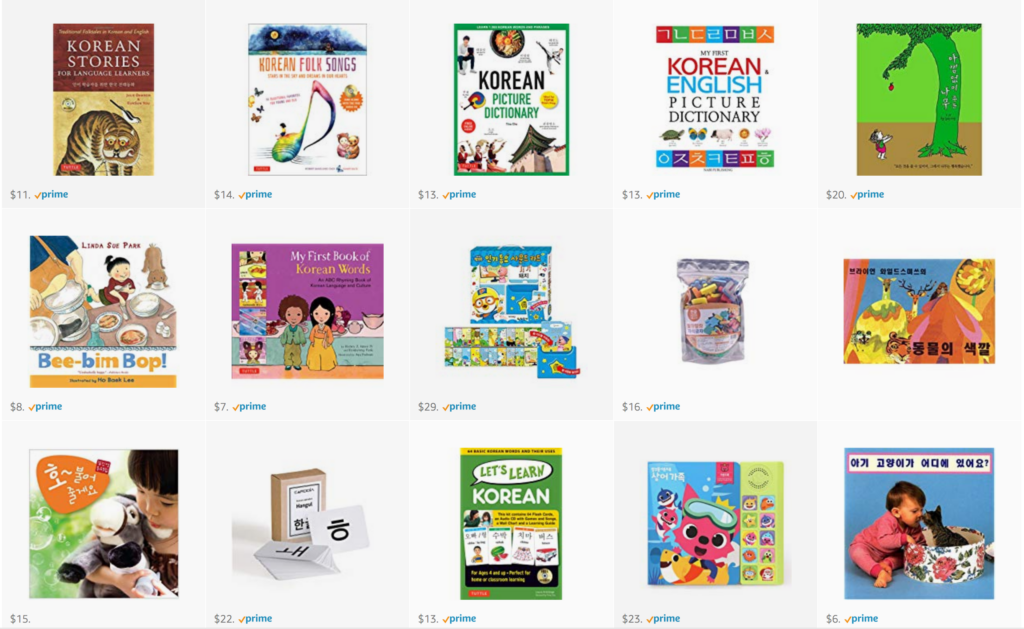
Fun and low-prep Korean learning activities for kids!
- 7 Easy Ways to Teach Chinese and Korean with Play Dough (VIDEO)
- Emotions Book and Montessori 3-part cards in English, Chinese, and Korean
- Eric Carle Picture Books for Children in Chinese and Korean!
- Family Members Learning Activity for Kids: Sight Word Envelope Surprise!
- Fun and Easy Korean Lunar New Year Crafts for Kids!